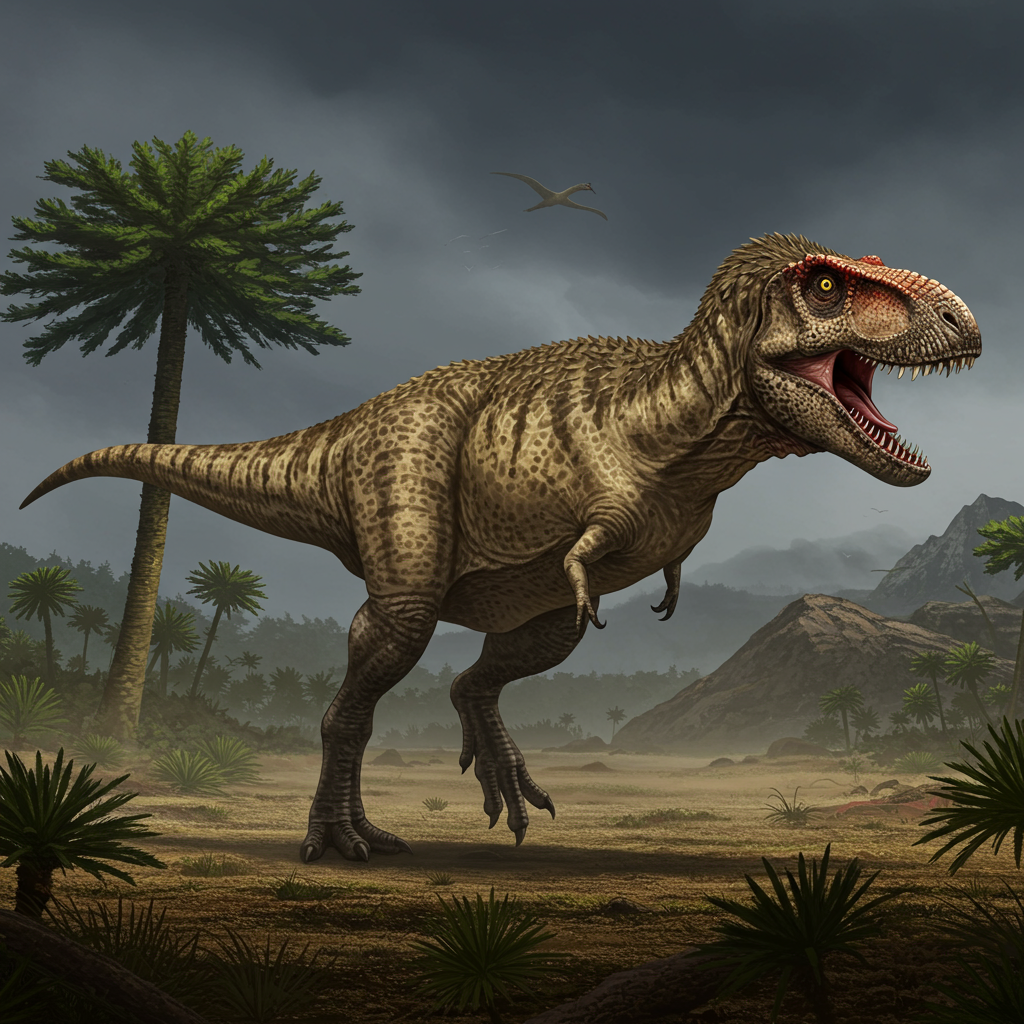Shocking Discovery: A “Dragon Prince” Tyrannosaur Could Rewrite T. Rex History
Scientists have made a remarkable discovery that could fundamentally alter our understanding of the mighty Tyrannosaurus rex and its evolutionary journey. They’ve unveiled a previously unknown species of tyrannosaur, Khankhuuluu mongoliensis, a medium-sized predator that roamed the Earth approximately 86 million years ago. This exciting find is being hailed as a crucial “missing link,” bridging significant gaps in the fossil record and shedding light on how smaller, more agile dinosaurs eventually evolved into the colossal apex predators we know today.
Meet Khankhuuluu mongoliensis: The “Dragon Prince”
Named after the legendary “Dragon Prince” of Mongolia where its fossils were found, Khankhuuluu mongoliensis offers a fascinating window into the world of tyrannosaurs millions of years before T. rex dominated the landscape. The species was identified from two partial skeletons that had surprisingly resided in a museum collection since the early 1970s.
The discovery was spearheaded by paleontologists Darla Zelenitsky and Jared Voris from the University of Calgary. The name Khankhuuluu was specifically chosen to highlight the species’ earlier, more modest size, distinguishing it from the later “kings” like T. rex. As Zelenitsky noted, this dinosaur was “a prince, rather than a king like its much larger tyrannosaur descendants.”
An Agile Hunter, Not a Bone Crusher
Unlike the towering T. rex, which could stretch up to 13 meters and weigh a staggering 8.8 tonnes, Khankhuuluu mongoliensis was considerably smaller. Estimates suggest it stood around 2 meters tall at the hips, measured about 6 meters from nose to tail, and weighed roughly 750 kilograms. This mid-sized profile, combined with its long, slender legs, suggests Khankhuuluu was likely a swift and agile hunter.
Further analysis of its lightly built skull indicates it lacked the immense bone-crushing bite force that was a hallmark of its larger, later relatives. According to Voris, Khankhuuluu represents a vital “transitional form from some even smaller ‘tyrannosauroid’ ancestors to those giant apex predator tyrannosaurs.”
Filling a Critical Gap in Tyrannosaur Evolution
The discovery of Khankhuuluu mongoliensis significantly enriches our understanding of the complex evolutionary tree of tyrannosaurs. The fossil record has long presented a challenge, particularly lacking intermediate-sized species that could clearly demonstrate the transition from the small, early ancestors to the towering predators that followed.
Khankhuuluu helps fill this significant void. Living approximately 20 million years before Tyrannosaurus rex, it provides a tangible link connecting ancient, smaller species like Suskityrannus and Moros intrepidus to the massive tyrannosaurids that emerged later.
More Than a Straight Line: The Winding Path of Tyrannosaur Evolution
While a simple narrative might suggest tyrannosaurs just grew from tiny ancestors to massive predators, the reality is far more intricate. Over millions of years, these dinosaurs diversified and spread across continents. Species like Tarbosaurus and Qianzhousaurus thrived in Asia, while larger relatives eventually made their way to North America, culminating in T. rex as the dominant apex predator there.
This complex, multi-continental journey over vast stretches of time is key to understanding evolutionary relationships. It explains why T. rex, despite being found in North America, is more closely related to the Asian Tarbosaurus than to other North American tyrannosaurs like Daspletosaurus.
Furthermore, the evolution wasn’t just about overall size. Within ecosystems, tyrannosaurs occupied different roles. Juvenile T. rex, being smaller and more agile than adults, likely hunted different prey. In Asia, different tyrannosaur species coexisted, with Tarbosaurus fulfilling the apex predator role while others, such as Alioramini species like Qianzhousaurus, remained smaller and more agile, occupying distinct ecological niches. The discovery of Khankhuuluu mongoliensis provides a crucial piece to this complex evolutionary puzzle, illustrating a key stage in the development of these incredible dinosaurs.




